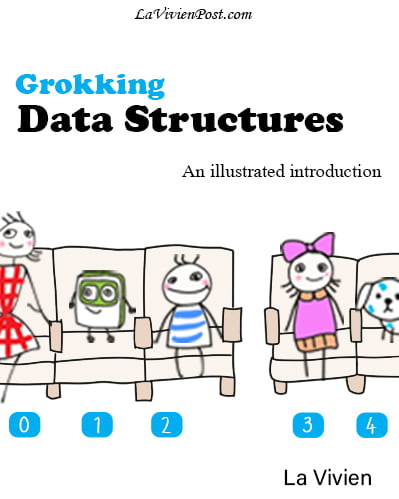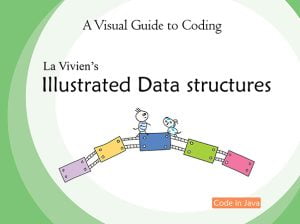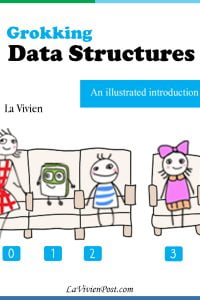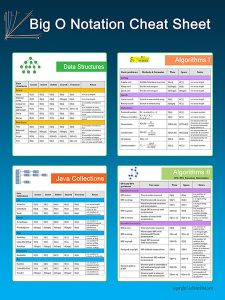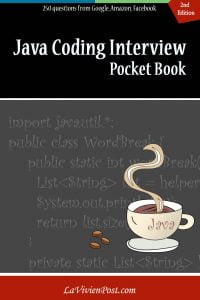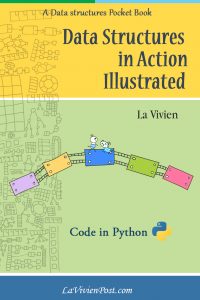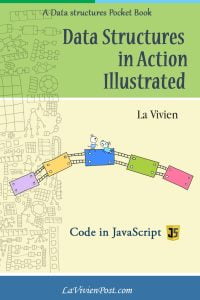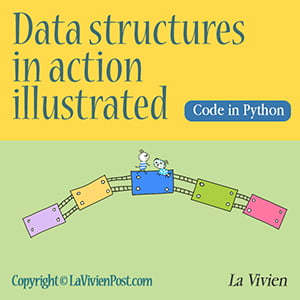 Data structures in action illustrated Python
Data structures in action illustrated Python
-PDF and EPUB
Language: English
Pages: 95
PDF page size: 2360 x 1640 pixels
PDF file size: 21MB
EPUB page size: 8.5 x 11 inches
EPUB file size: 35MB
-
$14.95
EPUB
PDF+EPUB
Descriptions
Data structures in action illustrated (Python) PDF and EPUB use visual language to explain the major concepts in data structures, how they work, and when to use what. It helps programmers or computer science students to understand the data structures inside and out. You can apply them to your projects or help with your job interviews. Since it is rich in visual presentations, you also can read for entertainment.
This book covers 8 major data structures, such as arrays, linked lists, stacks, binary trees, hash tables, and graphs among others. The important concepts such as Big O notation, binary search, and recursion are explained alongside. The code is written in Python. (Java and JavaScript are available too.)
The eBook is in digital format. There are PDF and EPUB. With PDF, you can print on paper or read on any devices that have Adobe Reader installed. With EPUB, you can read on any mobile device. EPUB also provides the links to view and download code online. You have options to purchase both together at a discounted price.
Payment method
We provide two secure Payment Methods: PayPal and credit card. The currency is USD. After you make a payment, you will have the download link immediately. Download and enjoy the book right away.
Terms of Use
All files are for personal use only. They cannot be used commercially or be resold or redistributed for any purpose. The book was created and copyrighted by © LaVivienPost.com. All rights reserved.
Return Policy
Due to the digital nature of the item, we cannot accept returns, refunds, or cancellations.
Free Download
Sign up now to get a FREE download of all source code in the book. It includes the implementation of arrays, linked lists, stacks, queues, binary search trees, heaps, priority queues, hash tables, graphs, tries, and more (a total of 17 Python files).
FAQ
1. Arrays, sorted arrays, matrices;
2. Linked lists, doubly linked lists, circular linked lists;
3. Stacks, queues, and circular queues;
4. Binary trees, binary search trees;
5. Heaps and priority queues;
6. Hash tables;
7. Graphs, weighted graphs, adjacency matrices;
8. Tries.
Reviews
“…you managed to synthesize difficult topics into a very didactic form. I fell in love with the book and bought it to inspire myself for my classes. I work with solution architecture and teach classes to a more underprivileged audience. My rating for your book is 10. I really enjoyed it.”
R. Saggioni, Portugal, 5/24/2024
“…I can't wait to say how helpful the book is. I am not sure about other students but for me with no background in computer, it seems to be great. Well-organized and easy to follow. Thanks for introducing the book.”
– A student of COSC2007, Algoma University, 12/4/2022
